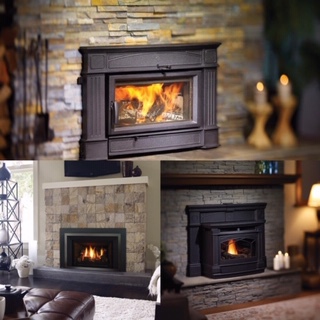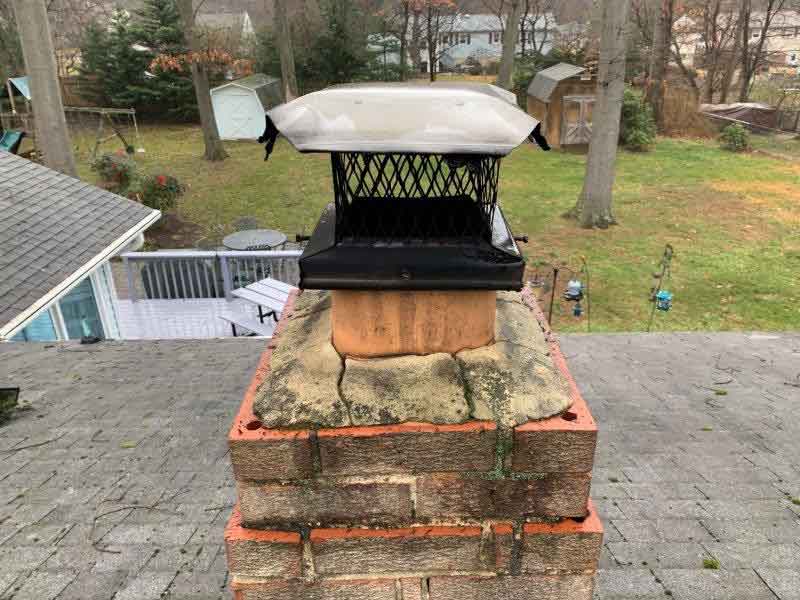Is your fireplace just not producing enough heat to warm up everyone in your living space? If you’re struggling to get the warmth and comfort you desire, then the biggest recommendation we can make is to switch to an insert. Classic wood-burning fireplaces simply don’t have near the efficiency levels as newer inserts do, and even the most highly recommended tips and tricks simply won’t prevent heat from escaping from those more traditional set-ups.
Learn more about your options below, and count on the team here at Clean Sweep of Anne Arundel County to ensure you get everything you need and more from your fireplace this fall and winter. With colder weather just around the corner, now is the time to schedule an appointment with our CSIA certified crew!

Getting The Highest Levels Of Efficiency
So, how much more efficient is an insert, really? Does it actually make that big of a difference? Well, here’s the low-down on fireplace efficiency levels. If you own a traditional wood-burning fireplace, you can expect your efficiency levels to be around 20-25%. That means that about 70-80% of your heat is escaping up through your chimney, and there’s only so much you can do to stop this from happening.
Now, when you have an auxiliary appliance installed (such as a wood stove insert, a gas insert, or a pellet-fueled insert), your efficiency levels are flipped. This means that, instead of losing most of your heat, you get the majority of it back into your living space. In fact, you can expect efficiency levels to soar from anywhere between 70-90% – that’s a significant difference, and it will guarantee a lot more comfort for your home!
The most efficient gas models out there slide in easily, then bring in their own fresh air from the outside, so none is used from your home. This not only pours more heat into your living space… it saves you money on your monthly energy bills, too! They’ll also have a small exhaust pipe, ensuring the most heat possible goes back into your home.
Wood options aren’t quite as efficient as their gas counterparts, but they won’t disappoint either in terms of efficiency. If you are bummed about losing the ambiance of a wood-burning unit, but know the higher levels of heat will be worth the upgrade, then a wood-fueled insert is an excellent route to take.
And if you’re torn between the convenience of gas and the atmosphere that actual flames offer, then a pellet option provides a great middle ground! These will burn wood pellets, so you get that pleasant aesthetic of a real fire in your home, but they empty out of a hopper that you only load only once or twice a day. It’s a great alternative for those who really want the best of both worlds.
Not Ready To Let Go Of Your Traditional Set-Up?
Now, don’t get us wrong. If you have a traditional fireplace and you can’t bear to part with it, we get where you’re coming from! There’s a timeless ambiance these models offer, and replicating that atmosphere exactly simply cannot be done with alternative options.
If you only use your fireplace a few times per year to enjoy with friends and family or just to set the mood for a couple of festive holiday parties, then efficiency isn’t likely your priority. In these cases, there are some tips you can utilize to up your heat output a bit. Consider the following options:
First and foremost, make sure your fireplace is in great working order. This can be done by investing in annual inspections from a team of certified and experienced sweeps (like the crew here at Clean Sweep of Anne Arundel County). This is the only way to really know you’re getting the most from your chimney, and it ensures your structure stays strong and your home and family stay as safe as possible.
Use dry, well-seasoned wood. Any logs you use should have been dried out for at least 6 months in order to get the water content as low as possible. If you’re buying wood, make sure you’re getting pieces that are hollow-sounding, have ends that are darker and split, and are lightweight. They should also smell older/mustier, and if they’re cut shorter, they’re likely to be more dry, as well.
Preheat your flue. Starting your fire out right ensures it burns longer and hotter, so heat up your flue beforehand to ensure no smoke or fumes go straight into your home. An easy way to do this is to tightly roll up a newspaper, light the top, then hold it at the base of your chimney for a bit. This warms up the air in your chimney, so all of your fireplace fumes go in the direction they’re supposed to.
Invest in a fireback. A cast-iron fireback is installed in the rear of your firebox, and it can help radiate heat back into your home. Another similar tool is a heat reclaimer. Both of these options can make an impact if you aren’t looking to purchase an insert.
Just keep in mind that the differences these tips make will be marginal, so if it’s a lot of heat you want, an insert is really the only thing that will make a noticeable difference. Eager to discuss your options? We’re here to help! Give our crew a call today to get this process started!
The post What To Do If My Fireplace Isn’t Providing Enough Heat appeared first on Clean Sweep of Anne Arundel County.


 easy to stay on top of it all, which is why we’ve provided a list of things to keep in mind as you approach these upcoming weeks.
easy to stay on top of it all, which is why we’ve provided a list of things to keep in mind as you approach these upcoming weeks.












